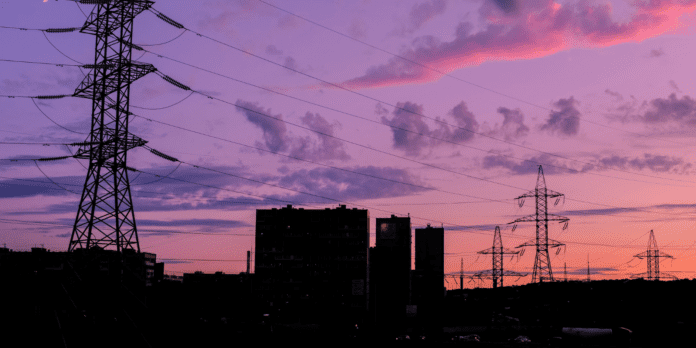Table of Contents
Power outages aren’t anything new, but it’s often only when we experience a blackout that we realize how much we rely on electricity. While many homes in the north have backup generators ready for the winter months, places not used to experiencing cold or heat-related blackouts may not be.
Currently, there’s no way to prevent all outages, even if power grids get regular upgrades with designs to withstand extreme weather and are scrupulously maintained. It’s up to society to protect itself by preparing in advance with home backup power.
Read on to find out how power outages might affect us in the future and how we can get ready for the next one.
What is a Power Outage?
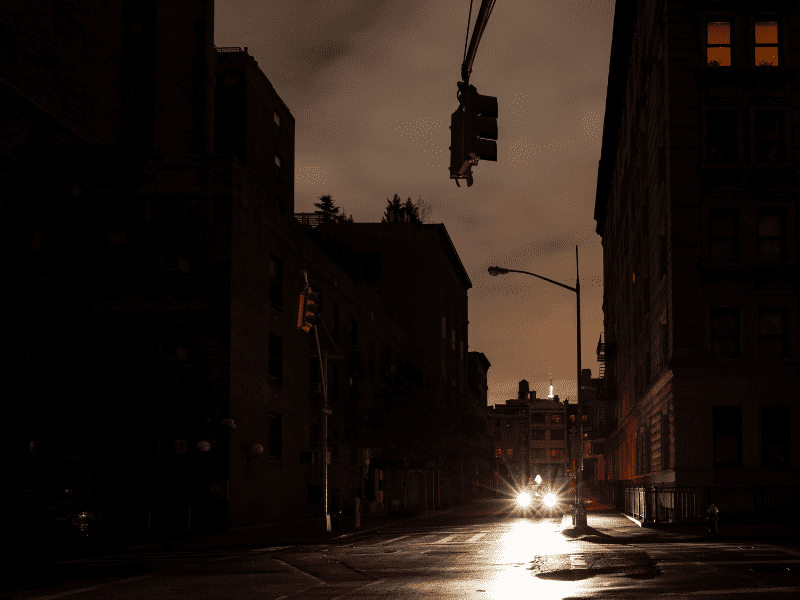
A power outage is the short or long-term cut of electricity in a particular area or section of the power grid. An outage is also known as a blackout, power cut, or power failure, although these are general terms for several types of blackouts.
It’s estimated that there are over 10 million power outages annually in the US alone. According to PowerOutage.US, 2020 saw 1.33 billion hours of power outages in the US, a 73% increase from the previous year. These escalating figures are often the result of extreme weather and disasters, especially hurricanes and wildfires.
Types of Outages
For the most part, there are four types of power outages: permanent faults, brownouts, blackouts, and rolling blackouts.
Each has a different cause and affects energy customers in various ways.
Blackouts
Blackouts are the most severe and common type of outage and are the complete failure of power in an area. They can last anywhere from a few hours to several weeks.
Brownouts
A brownout is a drop in voltage that causes lights to dim. Due to the dip in voltage, brownouts can often affect the power of some appliances, including hairdryers and heaters.
LEARN MORE ABOUT THE DIFFERENCES BETWEEN BLACKOUTS AND BROWNOUTS HERE.
Permanent fault
A permanent fault is a massive loss of power typically caused by a defect on a power line. Although it sounds serious, a permanent fault is one of the easiest blackouts to fix.
Rolling Blackouts
Rolling blackouts tend to be planned short-term outages designed to avoid total grid outages by temporarily cutting off power to some districts. Rolling blackouts are implemented when there’s a danger of a complete grid shutdown or to prevent damage during wildfires.
We’ve seen an increase in rolling blackouts over the last few years, specifically in California and Texas. In 2021, almost a million Californians were plunged into darkness over several evenings due to a lack of power during a heatwave.
Texas also experienced power outages after winter storms placed pressure on the grid. Rolling blackouts were put in place to avoid a statewide blackout.
LEARN MORE ABOUT ROLLING BLACKOUTS AND HOW TO PREPARE.
Causes of Power Outages
Natural disasters and inclement weather cause the majority of outages. In some cases, blackouts can be the fallout of several issues, such as during the 2021 Texas power crisis. While the unusually cold winter caused pipes and wells to freeze, it was made worse by poor planning and national grid access.
10 Main Reasons for Power Outages
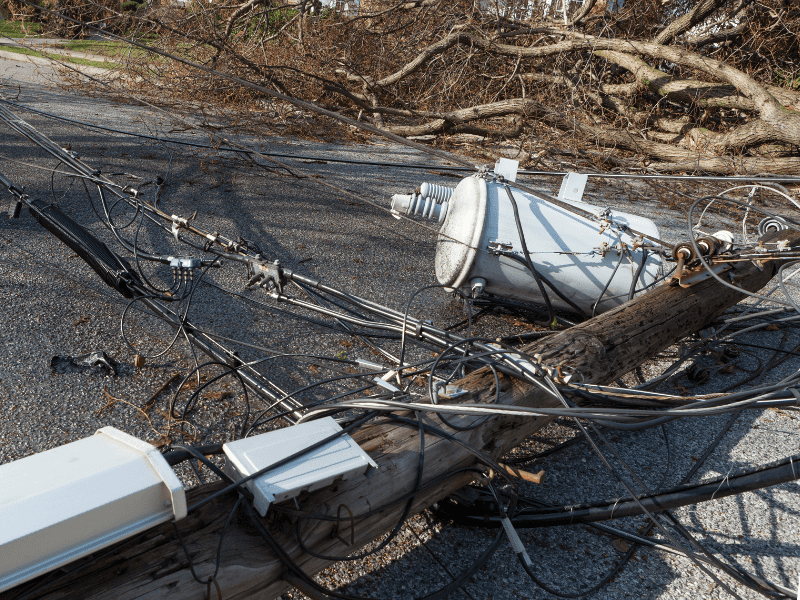
1. Severe Weather
From tropical storms to winter freezes, extreme weather is one of the most destructive culprits affecting our power.
2. Natural Disasters
Similar to severe weather, disasters such as hurricanes and mudslides cause power outages and are often long-lasting and difficult to predict.
3. Human Error
The most common yet preventable reasons for power outages are our mistakes! These are caused mainly by knocking out transmission line poles in traffic collisions or laborers with ladders.
4. Vandalism
Sub-stations have been the focus of vandalism in the past and are still sometimes the cause of small-scale power outages.
5. Equipment Failure
Due to the old age of the US power grid, failing equipment is high on the list of reasons for power outages. According to a study made by Xi’an Jiaotong University, China alumni, 47.86% of power outages worldwide occur due to power system failures.
6. Fallen Trees
Usually a byproduct of bad weather or traffic collisions, fallen trees and branches often down power lines causing short-term outages.
7. Squirrels
According to The American Public Power Association, squirrels are #2 of the top causes of power cuts. Unfortunately, squirrels often damage power lines and poles by gnawing through them. Luckily, since they’re localized, animal-related outages can be fixed quickly.
8. High Energy Demand
While many US states, such as Arizona, prepare in advance for their heavy-usage months by importing extra power, we’ve seen an increase in unexpected weather-related outages over the last few years. The 2021 Texas Winter Freeze saw an unnaturally cold winter creating higher demand for power, causing them to execute rotating outages, also known as rolling blackouts.
9. Planned Outages
Planned outages are often implemented to prevent a more significant issue from occurring. While usually for repairing or maintaining the system, in some cases, they’re also put in place for wildfire safety.
10. Excavation Digging
Some low voltage power cables are buried as low as 18inches (46cm) underground. While all utility lines’ locations are recorded, it’s easy to forget and dig into cables if you’re doing yard work or planting trees and shrubs.
READ MORE TOP REASONS FOR POWER OUTAGES
Which US State Has the Most Power Outages?
California.
Yep. Even though the Golden State is on its way to being the top renewable energy producer in the US, they still experience a lot of outages. In 2019, there were 25,281 blackout events in California, a 23% increase from 2018. 28.4 million customers were affected during these outages, double that of 2018.
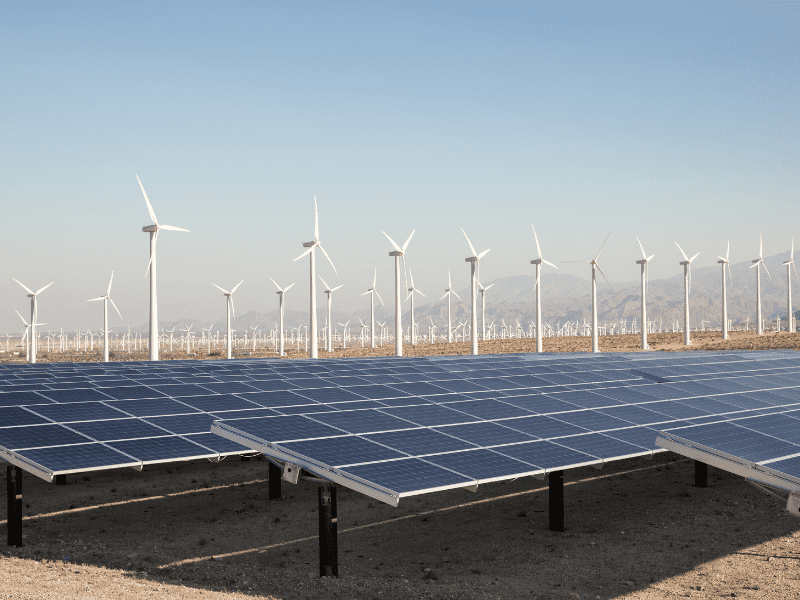
In 2019, Cali imported around 25% of the entire state’s power – that’s a whopping 70.8 million MWh. While California produces hydroelectricity which accounts for about 11% of its overall energy production, that’s 70% less than what was produced in 2019. Statewide droughts have placed a strain on the grid, as well as heat waves and dry weather forcing utility companies to shut down to avoid fires.
How Long Do Outages Last?
Usually only a few hours, but the honest answer is one you don’t want to hear: it really depends.
Most outages are generally over quickly, lasting 24-28 hours at most. But many factors affect how quickly you get back your power, including your location, the situation, and the workforce.
Cities such as New York expect frigid winters and storms, so while you might experience a blackout, chances are it’ll only be for a few hours. The city is more or less prepared to get things back up and running quickly to avoid extended outages.
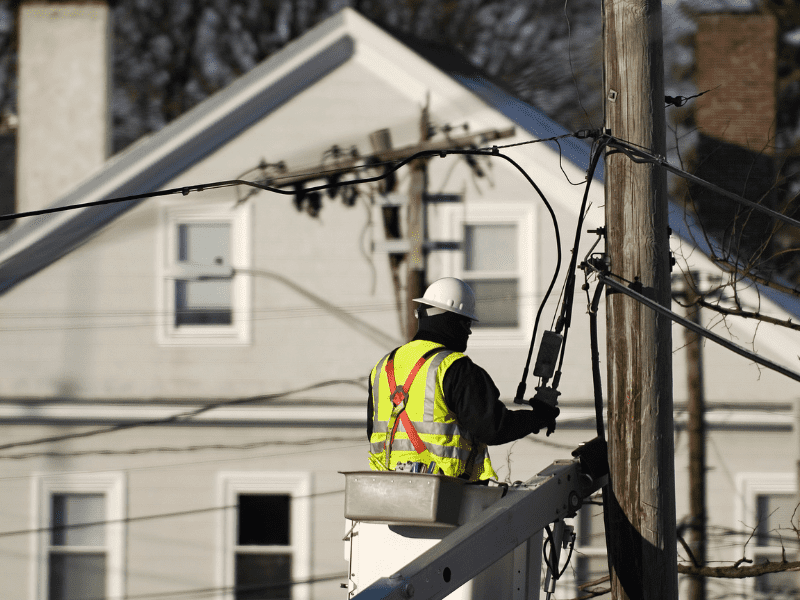
Similarly, if you live in a rural location, you expect power to take a while to return. Most folks outside cities prepare with traditional backup gas generators or more contemporary portable power stations.
It’s easy to forget how susceptible our power grid is to changing temperatures. Often it’s not a direct fault in the power plant, but the pipes freeze, preventing the fuel from flowing. If the effects of global warming worsen, we’ll likely continue to experience more blackouts, especially in areas where freezing winters and hot summers are unusual.
READ MORE ABOUT HOW LONG IT TAKES TO GET YOUR POWER BACK
Effects of Outages
Power outages aren’t just an inconvenience. For some, they can be extremely dangerous and even life-changing. Although we can’t entirely prevent these issues, we can prepare our homes, businesses, and communities for blackouts in the future.
Effects on Small Businesses
According to market research, businesses lose approximately 27 billion US dollars yearly from outages. If you’re a small business owner, knowing how a power cut might affect you and your business is essential to keep things running as smoothly as possible.
When rolling blackouts are in effect, they often affect both residential and commercial districts. While big supermarkets and big box stores may have their own backup generators, without power, small businesses have to close, potentially losing money, stock, and future business. Preparing in advance may be essential for some companies to keep their business afloat.
Loss of Revenue
One of the most significant concerns of business owners is the potential financial loss they may experience during a blackout. Without lighting or access to specialized equipment for a business, not to mention the health and safety of customers and staff, doors remain shut.
Damage to Reputation
Power outages can slow online businesses down too. From receiving an order to printing off postage, these delays may affect customer relations, affecting the long-term reputation of companies that rely on e-commerce as their bread and butter.
Reduced Productivity
Outages affect an entire business’s workflow, causing orders to backup, especially if those tasks require computers or electronic equipment to complete.
Damaged Equipment
Power surges that occur once the power comes back on can permanently damage your electrical devices. For those in the F&B industry, fresh food and stock will have spoiled and need to be thrown away.
Small business owners can prepare by creating a disaster recovery plan and prepping emergency power to get them through short power outages. While they may not be able to work at total capacity, it may help alleviate some of the issues discussed above.
How Power Outages Effect Homes
Lack of heat or cool air leaves those who are already vulnerable more susceptible to heatstroke or hypothermia. Pets are also likely to overheat during hot temperatures. In cold weather, water pipes might freeze, preventing access to water. While we can live without a shower for a few days, no drinking water is another problem.
While blackouts are sometimes unexpected, staying prepared is the best policy wherever possible, from storing bottled water to preparing a secondary power source to keep your essentials running.
Learn more about preparing for winter power outages or dealing with blackouts during a heatwave.
Effect on the Community
Power outages can significantly affect society as a whole, from causing accidents to having a long-lasting impact on people’s physical and mental health.
Social
Outages affect almost every aspect of our society, from accessing clean water, food and medicine, causing communication interruptions and, worse case scenarios, increasing crime. A power outage that affected New York City in 1977 saw an entire section of Manhattan plunged into darkness, halting traffic, shutting down subways, and resulting in arson and looting.
Health
Long-lasting blackouts can also affect community health. Accidents are more likely, including road trip accidents. In cases where fresh water delivery and waste removal become difficult, gastrointestinal and renal illnesses can become a problem. Those already vulnerable risk exacerbating existing conditions, especially cardiovascular and respiratory diseases.
How to Prepare for an Outage
We’ve already touched on this briefly, but where possible, keep some basic supplies handy, such as bottled water, dry goods, and canned food. If you have a disability or rely on medication, have a plan and emergency kit as recommended by Ready.gov.
One of the best ways to prepare for blackouts of any length is to keep a portable power station or solar generator. Even if you live in an apartment block, a unit is small enough to store in a closet until you need it. They can power just about any appliance, including your fridge, to keep food fresh or store medication. Stay cool in summer with a fan or even an AC unit. Run heaters and electric blankets to stay warm during the winter.

To learn more, read our preparation guides:
- Disaster Preparation
- How to Prepare for a Hurricane
- Preparing for Outages in Warmer Weather
- Prepare for Outages in Winter
Preventing Outages in the Future
Smart Grids
A smart grid is an automated two-way communication network that can monitor energy consumption, providing home and business owners with help to reduce energy costs. Smart grids are incredibly efficient and can fix themselves, ensuring a constant power supply.
Smart grids can predict supply and demand and use smart sensors to locate potential grid failures and fix them before it escalates. They can isolate an outage and reroute power to avoid huge-scale power outages.
Microgrids
A microgrid takes renewable energy from solar or wind and, in combination with intelligent software, stores energy in batteries. Microgrids are an ideal power source for a blackout as they can disconnect from the main power grid. This ‘islanding’ format allows it to continue providing power to its customers even when a power outage occurs.
In the wake of rising energy prices and achieving sustainability, small commercial businesses are beginning to develop their own microgrids, including California-based Bimbo Bakeries.
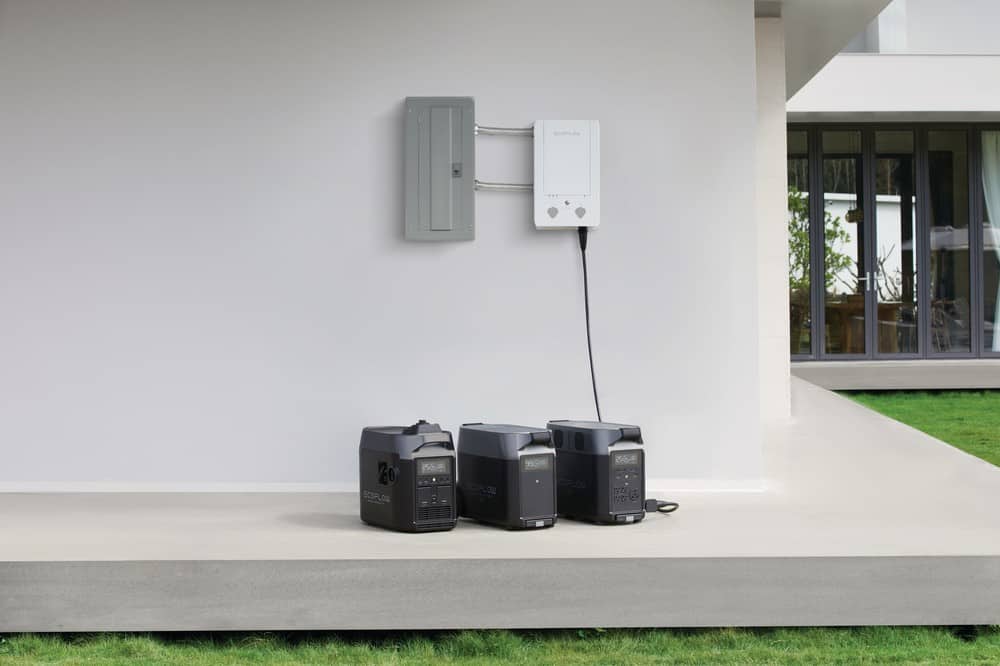
READ MORE ABOUT MICROGRIDS HERE.
Undergrounding
There are downsides to burying power cables, but undergrounding could help prevent some power outages, especially those directly affecting power poles and lines. Although some smaller US cities have already implemented undergrounding, most energy companies are reluctant to do so due to its cost and inconvenience.
READ MORE ABOUT UNDERGROUNDING HERE.
Improve Grid Reliability and Resilience
As power outages continue to increase, there’s mounting pressure on power companies to upgrade their systems to withstand severe storms. Steel poles can replace wooden ones, and cables can be made from thicker, longer-lasting materials. Another solution for companies is to use computers to predict weak spots in their system and repair them before they become serious.
Energy storage
The main issue with most of the methods above is the expense to customers. Substantial upgrades to a power system will inevitably increase customers’ energy bills. Logan Burke, executive director of New Orleans-based nonprofit the Alliance for Affordable Energy, suggests that existing solar panels should be leveraged to help those access power during an outage. In New Orleans, there are plenty of roof-top solar panels, but none are attached to batteries that could store energy in preparation for a blackout.
LEARN MORE ABOUT SOLAR ENERGY STORAGE HERE.
Power outages aren’t going away anytime soon, and chances are they’ll only get worse. Stay prepared and keep your family safe with power that will maintain your electronic essentials, even when the grid is down.
Prepare With Portable Power
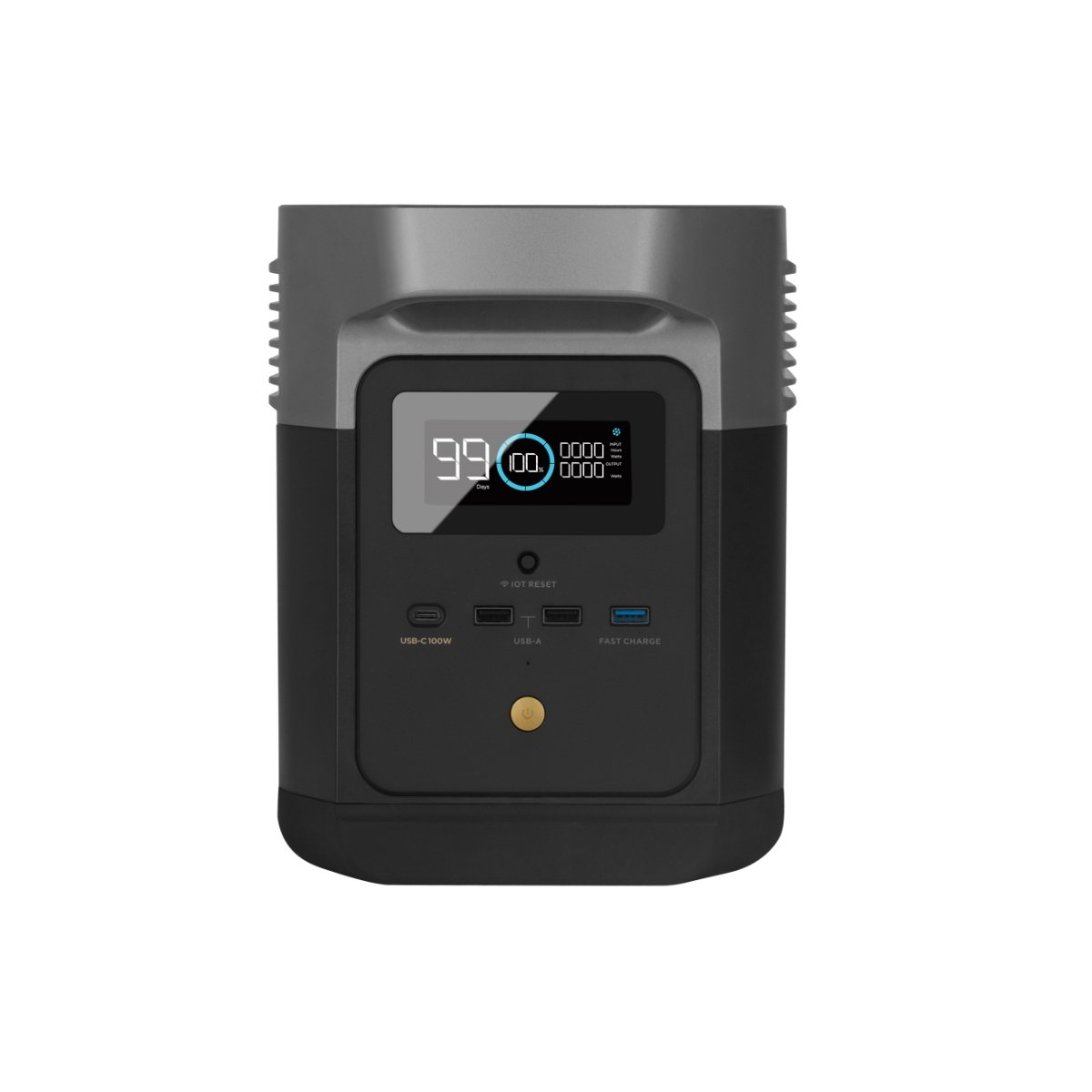
EcoFlow DELTA mini
| Capacity 882Wh |
| Phone (11W) 62 Charges |
| Laptop 60W 12 Charges |
| Mini Fridge 12 Hours |
| Blender (500W) 1.5 Hours |
| Coffee Machine (1000W) 0.7 Hours |
| Air Fryer (1500W) 0.5 Hours |
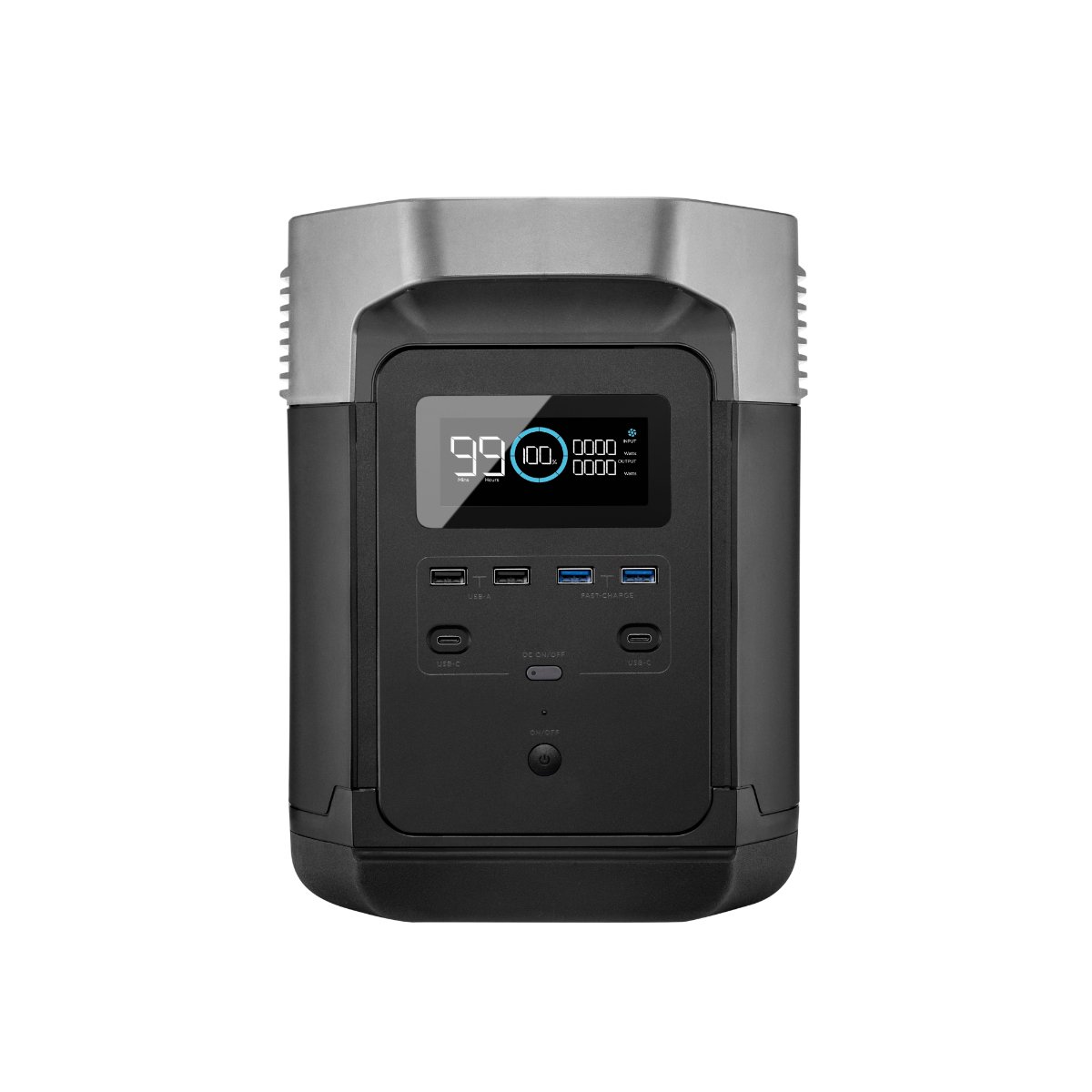
EcoFlow DELTA
| Capacity 1260Wh |
| Phone (11W) 104 Charges |
| Laptop 60W 19 Charges |
| Mini Fridge 19 Hours |
| Blender (500W) 2.1 Hours |
| Coffee Machine (1000W) 1.1 Hours |
| Air Fryer (1500W) 0.7 Hours |
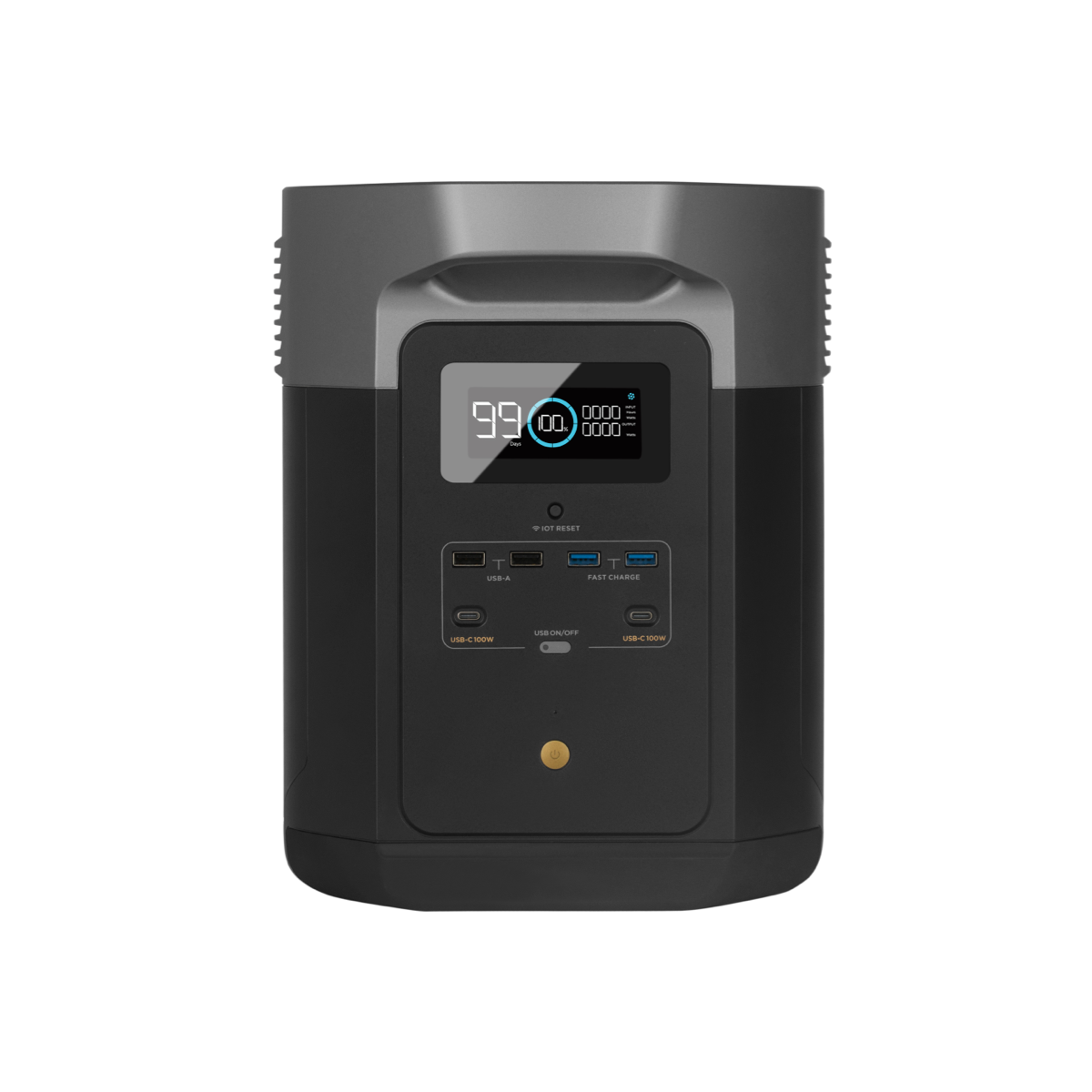
EcoFlow DELTA Max
| Capacity 2016Wh |
| Phone (11W) 175 Charges |
| Laptop 60W 32 Charges |
| Mini Fridge 33 Hours |
| Blender (500W) 3.5 Hours |
| Coffee Machine (1000W) 1.9 Hours |
| Air Fryer (1500W) 1.2 Hours |
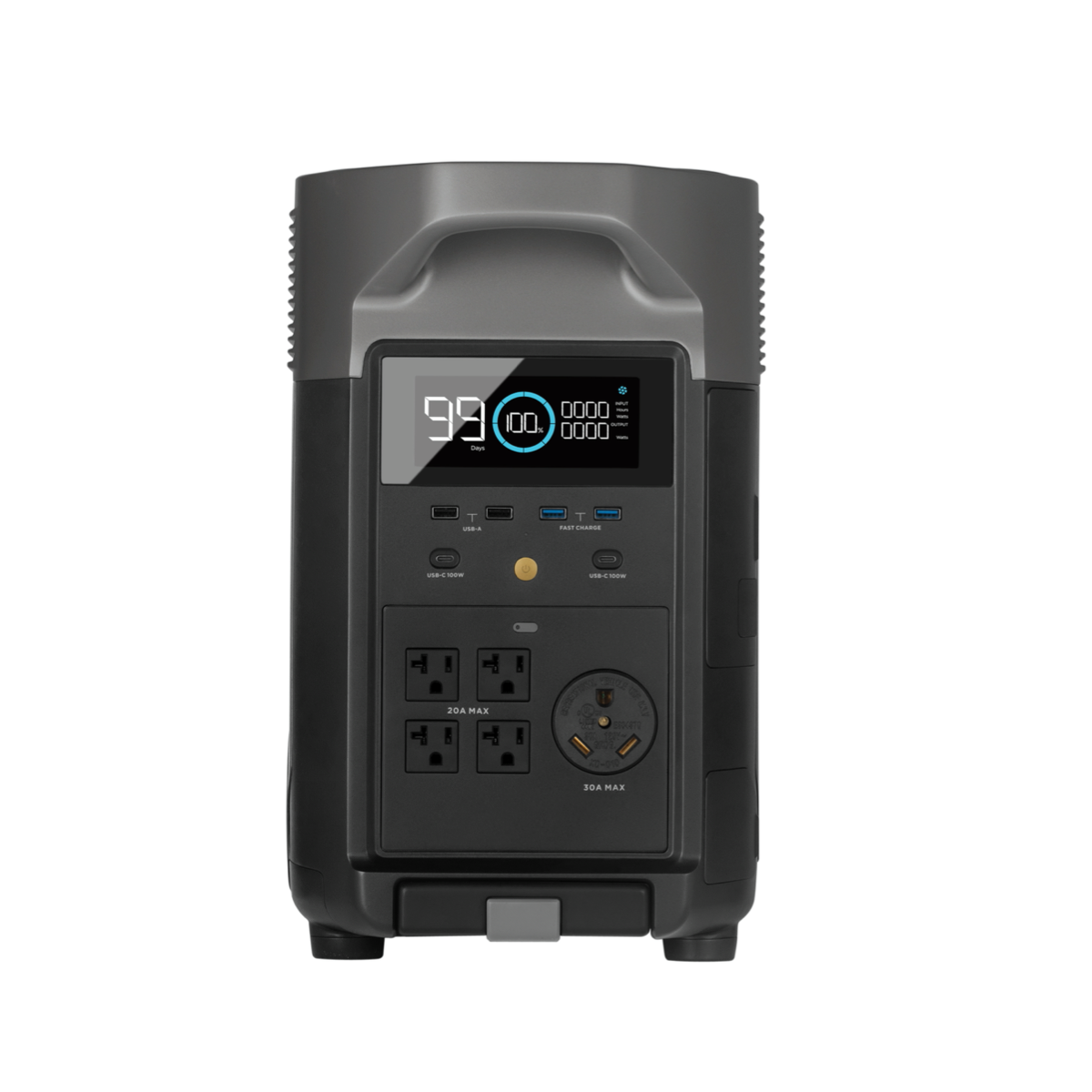
EcoFlow DELTA Pro
| Capacity 3600Wh |
| Phone (11W) 313 Charges |
| Laptop 60W 57 Charges |
| Mini Fridge 57 Hours |
| Blender (500W) 6.5 Hours |
| Coffee Machine (1000W) 3.3 Hours |
| Air Fryer (1500W) 2.2 Hours |
